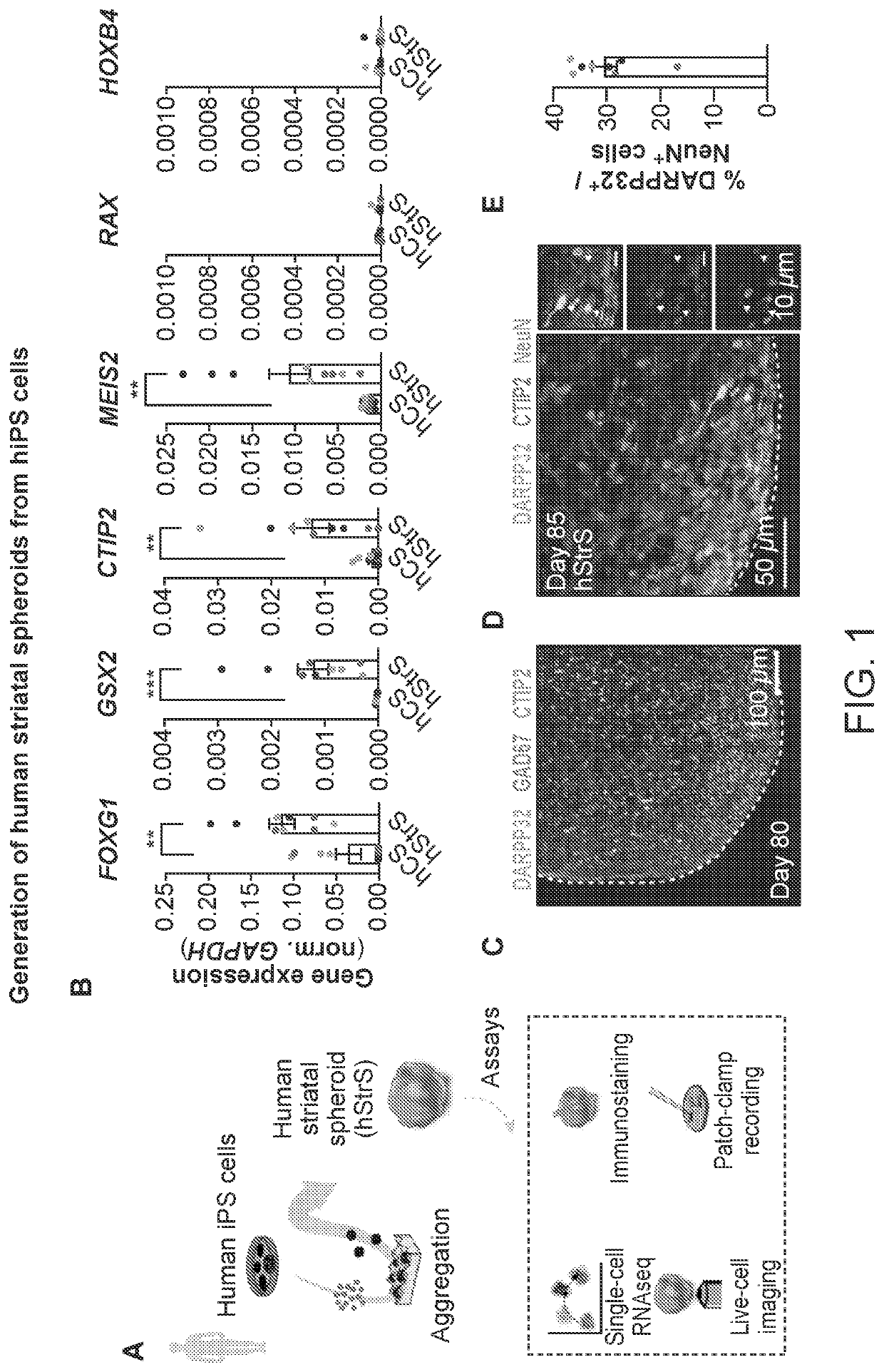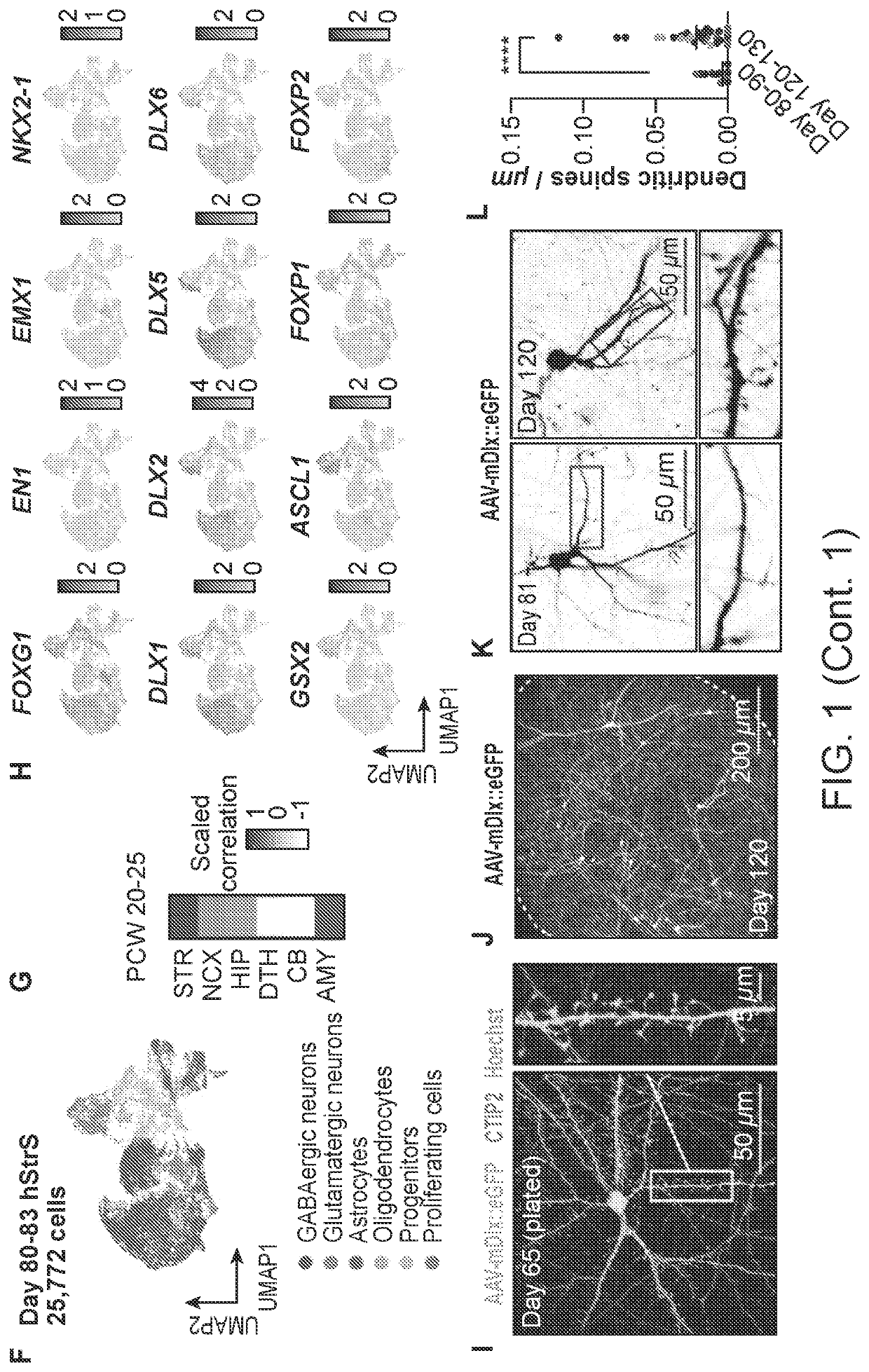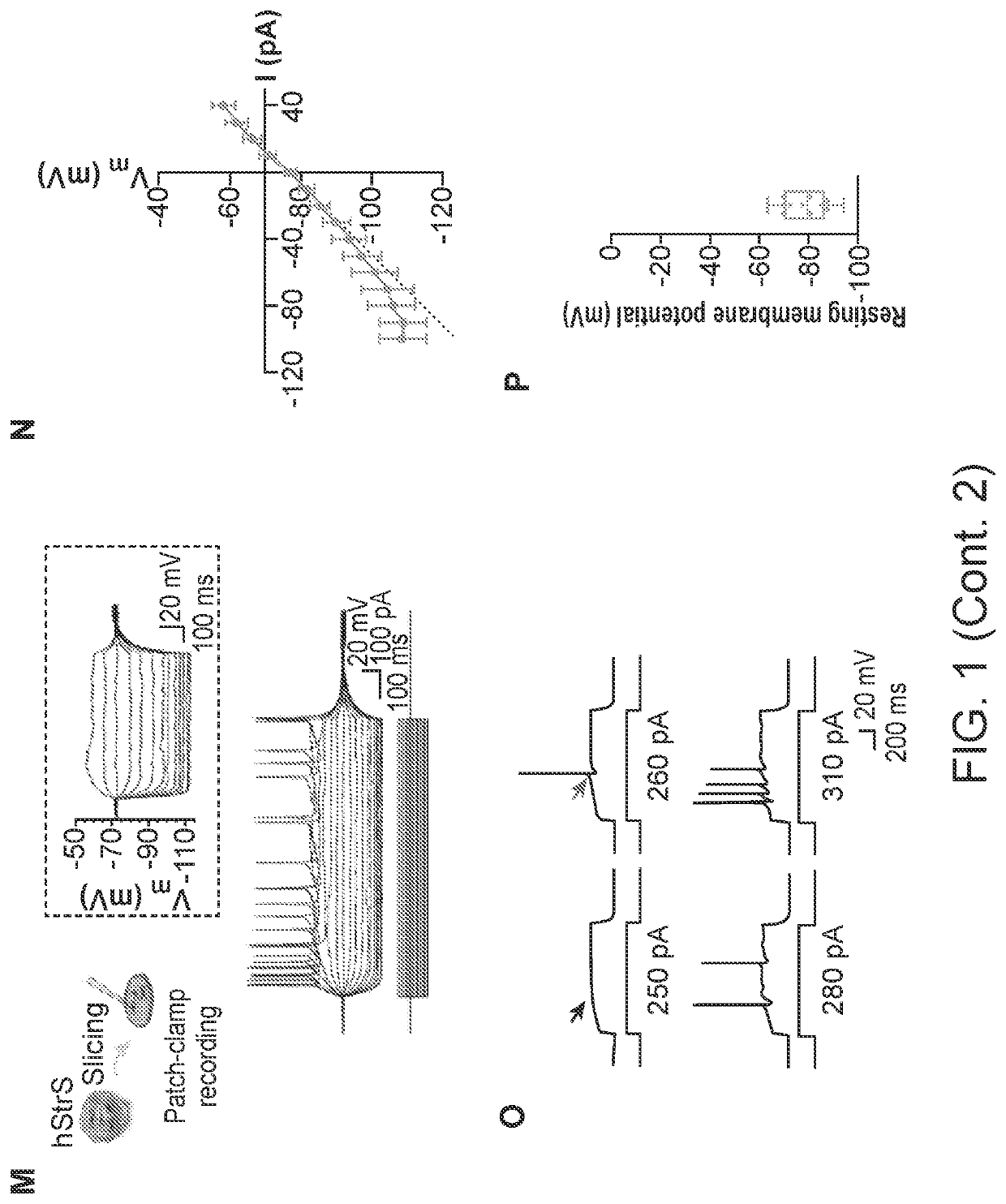Human cellular model for investigating cortico-striatal-midbrain neural pathways
- Summary
- Abstract
- Description
- Claims
- Application Information
AI Technical Summary
Benefits of technology
Problems solved by technology
Method used
Image
Examples
example 1
Methods
[0123]Generation of human striatum spheroids (hStrS). Human induced pluripotent stem (hiPS) cells were cultured on vitronectin-coated plates (5 μg ml−1, Thermo Fisher Scientific, A14700) in Essential 8 medium (Thermo Fisher Scientific, A1517001). Cells were passaged every 4 days with UltraPure™ 0.5 mM EDTA, pH 8.0 (Thermo Fisher Scientific, 15575). For the generation of 3D neural spheroids, hiPS cells were incubated with Accutase® (Innovative Cell Technologies, AT104) at 37° C. for 7 min and dissociated into single cells. Optionally, 1 day before spheroid formation, hiPS cells can be exposed to 1% dimethyl sulfoxide (DMSO) (Sigma-Aldrich, 472301) in Essential 8 medium. To obtain uniformly sized spheroids, AggreWell-800 (STEMCELL Technologies, 34815) containing 300 microwells was used. Approximately 3×106 single cells were added per AggreWell-800 well in Essential 8 medium supplemented with the ROCK inhibitor Y27632 (10 μM, Selleckchem, S1049), centrifuged at 100 g for 3 min t...
example 2
Generation of Functional Human Striatum Spheroids (hStrS)
[0137]To generate hStrS resembling the Lateral Ganglionic Eminence (LGE) of the ventral forebrain, which ultimately give rise to the striatum, we dissociated hiPS cells enzymatically into a single cell suspension and aggregated them into spheroids using microwells (FIG. 1A). After dislodging the spheroids from the microwells, we treated them with dual SMAD inhibitors dorsomorphin and SB-431542 for 6 days followed by IWP-2 (day 7-23), Activin A (day 7-23) and Retinoid X receptor agonist SR11237 (day 12-23). This novel combination of patterning factors generated spheroids with high levels of the forebrain marker FOXG1 and LGE markers GSX2, MEIS2 and CTIP2, but not hypothalamus maker gene RAX and spinal cord marker gene HOXB4 at day 23 (FIG. 1B). At 80 days, hStrS showed the presence of DARPP32+GAD67+, DARPP32+CTIP2+, and DARPP32+ / NeuN+ cells indicative of medium spiny neurons (FIG. 1C, D, E). To comprehensively characterize stri...
example 3
Generation of Cortico-Striatal Assembloids (hCS-hStrS)
[0138]To develop a model forthe formation of cortico-striatal circuits in the developing human brain (FIG. 2A, B), hCS and hStrS that had been separately differentiated were placed adjacent to each other inside conical tube. After 3 days, the spheroids successfully assembled (FIG. 2C) and started forming cortico-striatal projections (FIG. 2D). The projections were unidirectional, with neurons in hCS projecting to hStrS, but not vice versa (FIG. 2D, E). To further characterize hCS projections into hStrS, we used retrograde viral tracing (FIG. 2F). We separately infected hStrS with a ΔG-rabies virus carrying Cre-eG FP and with an AAV carrying the rabies glycoprotein (G), and hCS with an AAV encoding mCherry under a double-floxed ORF (DIO-mCherry) (FIG. 2F). After virus infection, hCS and hStrS were assembled and expression of GFP and mCherry was examined at 28 days after fusion. We found that CTIP2* and SATB2+ neurons, which are pr...
PUM
 Login to View More
Login to View More Abstract
Description
Claims
Application Information
 Login to View More
Login to View More - R&D
- Intellectual Property
- Life Sciences
- Materials
- Tech Scout
- Unparalleled Data Quality
- Higher Quality Content
- 60% Fewer Hallucinations
Browse by: Latest US Patents, China's latest patents, Technical Efficacy Thesaurus, Application Domain, Technology Topic, Popular Technical Reports.
© 2025 PatSnap. All rights reserved.Legal|Privacy policy|Modern Slavery Act Transparency Statement|Sitemap|About US| Contact US: help@patsnap.com



